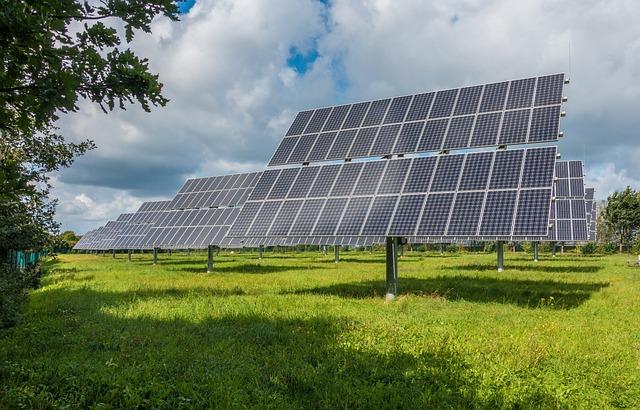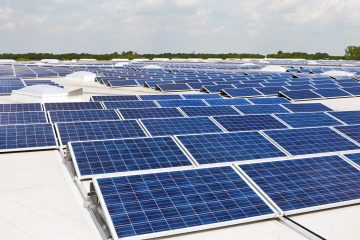As the sun rises each day, casting its warm embrace upon the earth, we are reminded of the remarkable history woven into the very fabric of solar panels. From humble beginnings rooted in curiosity and innovation to the cutting-edge technology of today, the evolution of solar panels mirrors humanity’s journey towards harnessing the power of the sun. Join us on a captivating exploration of the captivating history behind these sun-kissed marvels that continue to illuminate our world.
Table of Contents
- – The Evolution of Solar Panels: From Ancient Times to Modern Innovations
- – Pioneering Moments in Solar Panel Development and Technology
- – Understanding the Environmental Impact of Solar Panels
- – Tips for Choosing the Right Solar Panel System for Your Home
- Q&A
- Concluding Remarks


– The Evolution of Solar Panels: From Ancient Times to Modern Innovations
Solar panels have a fascinating history that dates back centuries, with roots tracing to ancient civilizations harnessing the power of the sun. In ancient times, civilizations like the Greeks and Romans used sunlight to light fires for religious ceremonies, marking the early beginnings of utilizing solar energy for practical purposes. Over time, different cultures across the globe developed various techniques to capture and utilize solar energy, paving the way for the solar panel technology we know today.
Fast forward to the modern era, and we witness significant innovations in solar panel technology that have revolutionized the renewable energy industry. From the invention of the first silicon solar cell in the 1950s to the development of more efficient photovoltaic cells in recent years, the evolution of solar panels has been remarkable. Today, solar panels are not only more efficient and affordable but also come in a variety of types such as monocrystalline, polycrystalline, and thin-film, catering to diverse energy needs with sustainable solutions.

– Pioneering Moments in Solar Panel Development and Technology
In the realm of solar panel development, a journey filled with innovation and breakthroughs has paved the way for the sustainable energy revolution we witness today. One pivotal moment in this history was the creation of the first practical solar cell by Bell Laboratories in 1954, marking the dawn of harnessing the power of the sun for electricity generation.
Another groundbreaking advancement came in the form of the introduction of thin-film solar cells, offering flexibility and ease of integration into various surfaces. This technology opened up new possibilities for solar panel applications, from curved surfaces on buildings to portable solar chargers for electronic devices. The continuous evolution of solar panel technology showcases the limitless potential of renewable energy sources in shaping our future.
| Solar Panel Milestones | Year |
|---|---|
| Silicon Solar Cells Created | 1954 |
| Introduction of Thin-Film Solar Cells | 1990s |


– Understanding the Environmental Impact of Solar Panels
Solar panels have a rich history dating back to the 19th century when French physicist Alexandre-Edmond Becquerel discovered the photovoltaic effect in 1839. This pivotal moment laid the foundation for the development of solar technology we know today. Fast forward to the space race era of the 1950s and 1960s, where solar cells were used to power satellites, marking a significant advancement in harnessing the power of the sun.
Over time, solar panels have evolved from bulky and expensive systems to sleek, efficient, and more affordable solutions widely used in residential, commercial, and industrial settings. With increased awareness of environmental issues and the push for sustainable energy sources, solar panels have become a symbol of clean energy and eco-conscious living. Their ability to reduce carbon footprint and lower electricity bills make them a popular choice for those looking to make a positive impact on the environment while saving costs in the long run.
| Benefits of Solar Panels |
|---|
| 1. Renewable energy source |
| 2. Reduces electricity bills |
| 3. Lowers carbon footprint |
| 4. Increases property value |


– Tips for Choosing the Right Solar Panel System for Your Home
When considering the right solar panel system for your home, several key factors come into play to ensure you make an informed decision. **Efficiency** is crucial as it determines how much energy your solar panels can convert from sunlight. Look for panels with high efficiency ratings to get the most out of your system. **Durability** is another important aspect to consider. Opt for panels that are known for their longevity and ability to withstand various weather conditions.
Moreover, cost plays a significant role in selecting the right solar panel system. While it’s essential to stay within budget, remember that investing in higher-quality panels may yield greater long-term savings. Warranty terms are also vital to protect your investment. Be sure to choose a system with a solid warranty that covers both the panels and the installation. Making a well-informed decision based on these factors will ensure you enjoy the benefits of sustainable energy for years to come.
Q&A
Q: When were solar panels first invented?
A: The concept of solar energy dates back to the 7th century B.C., but the first modern solar panel was developed in 1954 by Bell Laboratories.
Q: How did the early solar panels work?
A: Early solar panels, known as photovoltaic cells, converted sunlight into electricity using silicon semiconductors to generate an electric current when exposed to sunlight.
Q: What was the significance of the invention of solar panels?
A: The invention of solar panels revolutionized the way we harness renewable energy, paving the way for a more sustainable future and reducing our dependence on fossil fuels.
Q: How has solar panel technology evolved over the years?
A: Over the years, advancements in solar panel technology have led to increased efficiency, durability, and affordability, making solar energy more accessible to a wider range of users.
Q: What impact have solar panels had on the environment?
A: Solar panels have had a positive impact on the environment by reducing greenhouse gas emissions, decreasing dependence on non-renewable energy sources, and helping combat climate change.
Q: What does the future hold for solar panels?
A: The future of solar panels looks promising, with ongoing research and development focused on increasing efficiency, integrating storage solutions, and expanding solar energy usage across various industries and applications.
Concluding Remarks
As we conclude our exploration of the intriguing history of solar panels, it becomes evident that these remarkable inventions have come a long way since their humble beginnings. From the pioneering efforts of the 19th century to the innovative technologies of today, solar panels have continued to shine bright as a sustainable energy solution. Embracing the past while looking towards the future, we are reminded of the enduring power and potential of harnessing the sun’s energy. Let us continue to bask in the glow of solar energy’s evolution, enlightened by the past and energized for what lies ahead. Thank you for joining us on this enlightening journey through the captivating history of solar panels.




0 Comments